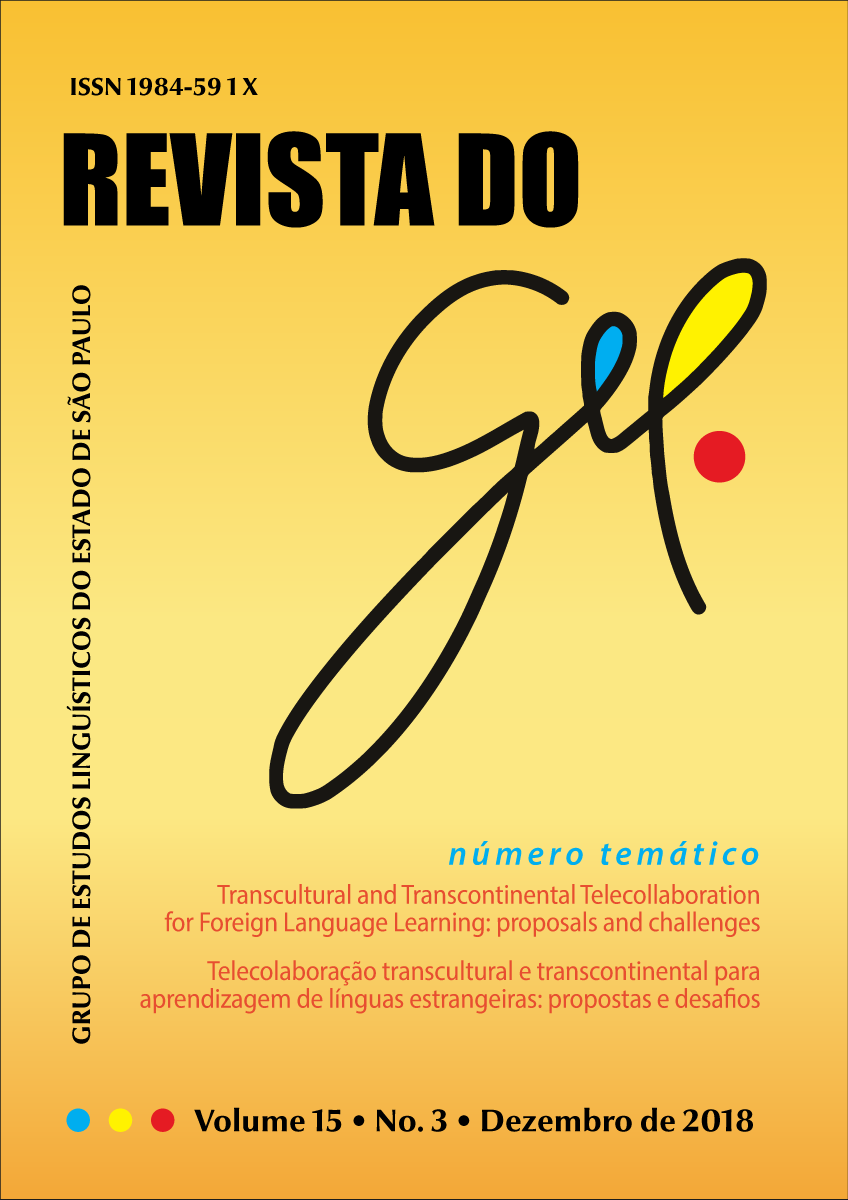Understanding teletandem language learning from an intersubjective perspective
DOI:
https://doi.org/10.21165/gel.v15i3.2396Palavras-chave:
Intersubjectivity. Language Education. Teletandem. Hermeneutics. Phenomenology.Resumo
This paper is about an investigation on language description that focuses on the role of the establishment of intersubjectivity (McCafferty, 2002; Mori and Hayashi, 2006; Vygotsky, 1995; Duranti, 2010; Sambre, 2012) in the teletandem learning process. Intersubjectivity is understood as an experience of otherness between discourse subjects and is established between individuals as they recognize each other as individual subjects in social contexts. We report on analyses of teletandem data from one online interaction within the project Teletandem: transculturality in online interactions via webcam (Telles, 2011). The data were generated in a context of institutional and integrated teletandem interactions (Cavalari and Aranha, 2016). The oral sessions were audio and video-recorded. The recordings were transcribed and analyzed according to a hermeneutic orientation. The categories focused in the study contemplate (i) verbal and non-verbal communication, (ii) the co-construction of conditions for responsiveness in the target-language; (iii) bodily mimesis; as well as (iv) the co-construction of a shared framework of reference. Among other findings, the establishment of intersubjectivity encompasses both an immediate partner-to-partner dimension as well as a broader discourse community-based dimension. It has shown to develop as partners perceive each other aestetically through their voice and cinematic image, so that they can develop mutual responsiveness.Downloads
Não há dados estatísticos.
Downloads
Publicado
31-12-2018
Como Citar
dos Santos, G. R., & Consolo, D. A. (2018). Understanding teletandem language learning from an intersubjective perspective. Revista Do GEL, 15(3), 324–343. https://doi.org/10.21165/gel.v15i3.2396
Edição
Seção
Edição Temática v. 15 n. 3 (2018)
Licença
Esta revista oferece acesso livre imediato ao seu conteúdo, seguindo o princípio de que disponibilizar gratuitamente o conhecimento científico ao público proporciona maior democratização mundial do conhecimento.
A REVISTA DO GEL não cobra taxa de submissão ou de editoração de artigos (articles processing charges – APC).
Os critérios gerais de direitos autorais da REVISTA DO GEL estão dispostos no termo de direitos autorais que cada autor aceita ao submeter seu trabalho no periódico. Como regra geral o periódico utiliza as regras CC BY-NC da Creative Commons (regra disponível em: https://creativecommons.org/licenses/by-nc/4.0/legalcode)



